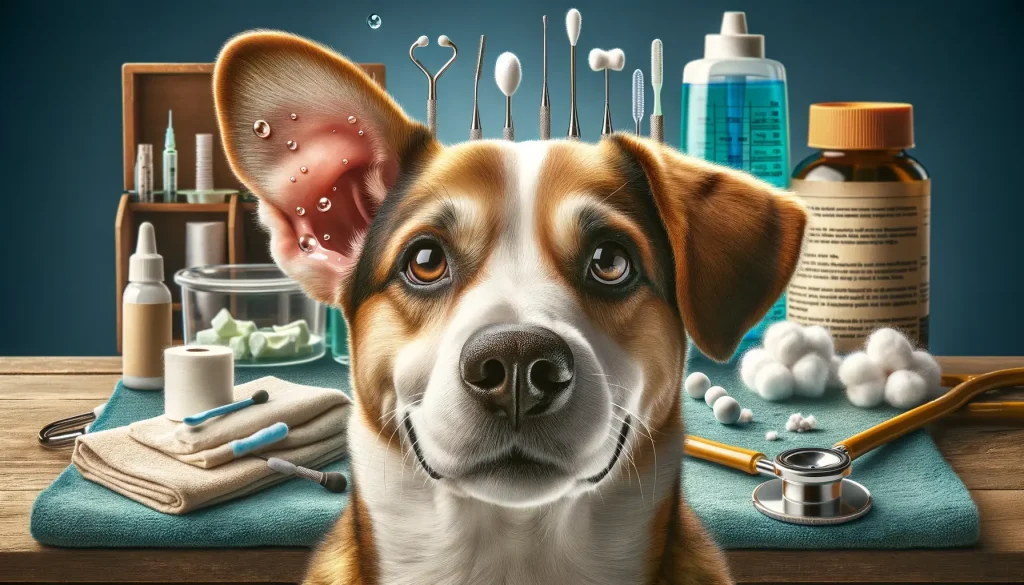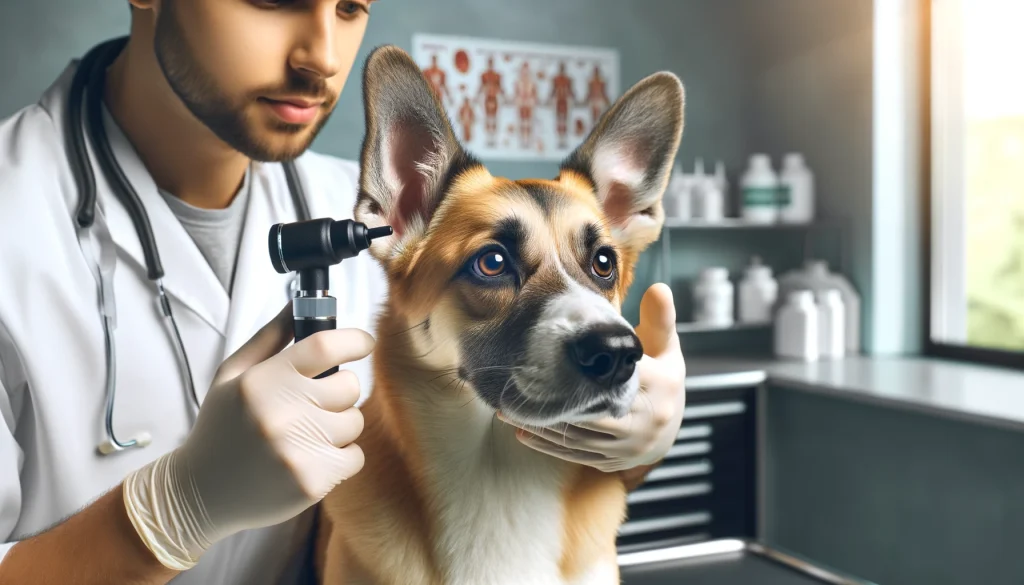
Treatment and Prevention for Dog Ear Infections
As a devoted pet owner, the health of your furry friend is always a top priority. Dog ear infections are a common ailment that can cause discomfort and potential health issues if left untreated. These infections manifest through various symptoms such as head tilting, scratching, unpleasant odors, discharge, crustiness, and signs of pain like redness and swelling. They stem from multiple causes, including excessive moisture, parasitic infections, allergies, and physical injuries. Understanding these aspects is crucial in navigating the waters of treatment and prevention.
Treatment usually involves a combination of antibiotics or fungicides, professional ear cleaning, and applying medicated ear drops. Meanwhile, prevention strategies include keeping the ears dry, regular cleaning, and trimming ear hair to maintain good ear health. But with numerous approaches to treatment and prevention, how can pet owners ensure they’re providing the best care to prevent dog ear infections? This article delves into effective medicine, insightful tips, and vital steps every pet owner should know to safeguard their dogs against ear infections.
Choosing Dog Ear Infection Medicine
When your dog is showing signs of an ear infection, such as head tilting, scratching, or any other symptom, knowing the right medicine to turn to is crucial. Whether it’s bacterial or fungal, the appropriate treatment can make all the difference. Medical intervention commonly involves antibiotics or fungicides, depending on the root cause of the infection. It’s essential to consult with a veterinarian to get a precise diagnosis and the correct medication.
In addition to prescription medicine, a professional ear cleaning session might be required. This process removes excess wax and debris, allowing the medication to reach deeper into the ear canal for more effective treatment. Many vets also recommend the use of specially formulated medicated ear drops. Applying these drops correctly is vital for the treatment’s success, and many professionals take the time to demonstrate the proper technique.
However, treatment doesn’t end with medicine alone. Preventing future infections plays a significant role in your dog’s ear health. Strategies include keeping the ears dry, especially after baths or swimming, and regular cleaning with vet-approved solutions. Also, trimming the ear hair can prevent blockage and reduce the risk of bacterial and fungal growth. It’s important to note that tools like Q-tips should be avoided during the cleaning process due to the potential for harm.


Home Remedies for Dog Ear Infection
While dealing with dog ear infections, adopting some at-home practices can be quite helpful in managing and preventing them. Here’s what you can do:
- Dry the ears thoroughly after baths or swims. This is crucial, especially for dogs with floppy ears. Moisture is a prime cause for ear infections, creating an ideal environment for bacteria to thrive.
- Adopt a routine of regular ear cleaning with solutions recommended by vets. Ensure to gently clean the outer ear without inserting any object into the ear canal.
- Trimming the ear hair can help in preventing blockages, reducing moisture retention, and lowering the risk of bacterial and fungal growth. Use safe and appropriate grooming tools or seek professional grooming assistance.
- Watch out for early symptoms such as head tilt, scratching, redness, and any unpleasant odor. Early detection is key to preventing severe infections.
Remember, while these home care tips are beneficial, they should complement, not replace, professional medical advice. If your dog shows signs of an ear infection, it’s important to consult with a veterinarian promptly. They can offer specific treatment tailored to your dog’s condition, including antibiotics or fungicides, in-office ear cleaning, and the correct way to apply medicated ear drops.

When to Seek a Vet
Detecting dog ear infections early and deciding when to visit the vet can save your pet from discomfort and prevent more serious issues. Here are clear signs that it’s time to consult a professional:
- Head tilt or lack of balance, suggesting fluid buildup, is a common sign. Your dog may struggle more with balance, indicating the infection has advanced.
- Excessive scratching and rubbing of the ears, or your dog reacts painfully when you touch their ears, highlights the need for a vet visit.
- A strong, unpleasant odor or oozing discharge is a clear indicator of infection that requires medical attention.
- Crusty ears from over-scratching or visible redness and swelling point towards severe infection or irritation.
These symptoms can escalate quickly, turning a manageable issue into a severe problem affecting your dog’s overall health and comfort. It’s essential to address these signs promptly by getting the right treatment.
A veterinarian will diagnose the exact cause, whether it’s bacterial, fungal, or due to other issues like allergies or physical injury. The treatment may involve antibiotics or fungicides, in-office ear cleaning, and the application of medicated ear drops. Your vet can also show you how to properly apply ear medication to ensure effective treatment.
Beginner Guide to Raising Quail at Home
What are the Signs of a Dog Concussion?
What Causes Your Dog’s Ears to Smell Bad?
When your dog’s ears start to emit an unpleasant odor, it might leave you puzzled…
Methimazole Treatment for Cat Hyperthyroidism
Methimazole plays a crucial role in managing feline hyperthyroidism, a condition marked by an overactive…
Got Hummingbirds in your Backyard? Here’s How to Care for Them.
Why Does Your Cat Pee Outside the Litter Box?
Cat’s Litter Box Issues It’s not uncommon for cat owners to face the frustrating dilemma…




